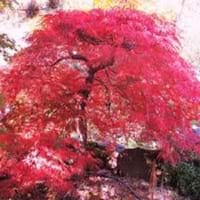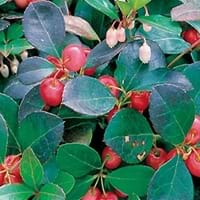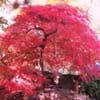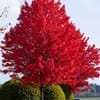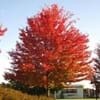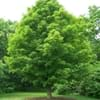Life Span
Perennial
Perennial
Type
Tree
Broadleaf Evergreen
Origin
Eastern Asia
Argentina, Chile
Types
Ever red , Crimson queen
Not available
Number of Varieties
Not Available
Habitat
Shady Edge
Hardwood forests, pine woods
USDA Hardiness Zone
5-8
7-9
AHS Heat Zone
8-2
Not Available
Sunset Zone
A3, 2a, 2b, 3a, 3b, 4, 5, 6, 7, 8, 9, 10, 12, 14, 15, 16, 17, 18, 19, 20, 21, 22, 23, 24
21,22
Habit
Arching/Fountain-shaped
Spreading
Flower Color
Red
White, Light Pink
Flower Color Modifier
Bicolor
Bicolor
Fruit Color
Red, Green
White, Purple, Rose, Violet, Plum, Black
Leaf Color in Spring
Light Green, Lime Green
Green, Dark Green
Leaf Color in Summer
Green, Lime Green
Dark Green
Leaf Color in Fall
Orange, Gold, Orange Red
Dark Green
Leaf Color in Winter
Not Available
Dark Green, Bronze
Leaf Shape
Maple shaped
Ovate
Plant Season
Spring, Summer, Fall, Winter
Spring, Summer, Fall, Winter
Sunlight
Full Sun, Partial Sun, Partial shade
Full Sun, Partial Sun, Partial shade
Type of Soil
Clay, Loam, Sand
Clay, Loam, Sand
The pH of Soil
Acidic, Neutral
Acidic, Neutral
Soil Drainage
Average
Average
Bloom Time
Early Spring, Spring, Late Spring, Early Summer
Late Spring
Tolerances
Drought
Drought, Salt
Where to Plant?
Ground
Container, Ground, Pot
How to Plant?
Transplanting
Seedlings, Semi-hardwood cuttings
Plant Maintenance
Medium
Low
Watering Requirements
Requires regular watering
Average Water Needs
In Summer
Lots of watering
Lots of watering
In Spring
Moderate
Moderate
In Winter
Average Water
Average Water
Soil pH
Acidic, Neutral
Acidic, Neutral
Soil Type
Clay, Loam, Sand
Clay, Loam, Sand
Soil Drainage Capacity
Average
Average
Sun Exposure
Full Sun, Partial Sun, Partial shade
Full Sun, Partial Sun, Partial shade
Pruning
Remove damaged leaves, Remove dead branches, Remove dead leaves
Remove damaged leaves, Remove dead branches, Remove dead flowers, Remove dead leaves
Fertilizers
All-Purpose Liquid Fertilizer
All-Purpose Liquid Fertilizer, Nitrogen
Pests and Diseases
Red blotch
Bacterial fruit blotch, Downy mildew, Gall Insects, Mites, Powdery mildew
Plant Tolerance
Drought
Drought, Shade areas
Flowers
Insignificant
Showy
Flower Petal Number
Single
Single
Foliage Texture
Fine
Medium
Foliage Sheen
Matte
Glossy
Attracts
Beetles
Birds, Insects
Allergy
Unknown
Hives, inflammation in lips, Sore Throat, Swelling in the face
Aesthetic Uses
Beautification, Bonsai, Landscape Designing, Showy Purposes
Beautification, Cottage Garden, Showy Purposes
Beauty Benefits
Not Available
Glowing Skin, Good for skin
Environmental Uses
Air purification
Food for animals, Food for birds
Medicinal Uses
Unknown
Analgesic, Anodyne, Antirheumatic, Antispasmodic, Astringent, Carminative
Part of Plant Used
Not Available
Fruits, Leaves, Stem
Other Uses
Not Available
For making oil, For making oil for cosmetics, Medicinal oil, Used as Ornamental plant, Used for its medicinal properties
Used As Indoor Plant
No
Yes
Used As Outdoor Plant
Yes
Yes
Garden Design
Container, Feature Plant, Hedges, Mixed Border, Topiary / Bonsai / Espalier
Container, Edging, Foundation, Hedges, Mixed Border
Botanical Name
ACER palmatum 'Omurayama'
Gaultheria procumbens
Common Name
Japanese Maple, Weeping Japanese Maple
Eastern teaberry, checkerberry, American wintergreen
In Hindi
Weeping Maple
boxberry
In German
Weeping Maple
boxberry
In French
Maple pleureur
boxberry
In Spanish
weeping maple
boxberry
In Greek
weeping maple
boxberry
In Portuguese
chorando de bordo
boxberry
In Polish
płacz klonu
boxberry
In Latin
weeping maple
Burning
Phylum
Angiosperms
Magnoliophyta
Class
Eudicotyledones
Magnoliopsida
Order
Sapindales
Ericales
Family
Aceraceae
Ericaceae
Clade
Not Available
Angiosperms, Asterids, Eudicots
Tribe
Not Available
Gaultherieae
Subfamily
Not Available
Vaccinioideae
Number of Species
Not Available
Importance of Weeping Maple and Boxberry
Want to have the most appropriate plant for your garden? You might want to know the importance of Weeping Maple and Boxberry. Basically, these two plants vary in many aspects. Compare Weeping Maple and Boxberry as they differ in many characteristics such as their life, care, benefits, facts, etc. Every gardener must at least have the slightest clue about the plants he wants to plant in his garden. Compare their benefits, which differ in many ways like facts and uses. The medicinal use of Weeping Maple is Unknown whereas of Boxberry is Analgesic, Anodyne, Antirheumatic, Antispasmodic, Astringent and Carminative. Weeping Maple has beauty benefits as follows: Not Available while Boxberry has beauty benefits as follows: Not Available.
Compare Facts of Weeping Maple vs Boxberry
How to choose the best garden plant for your garden depending upon its facts? Here garden plant comparison will help you to solve this query. Compare the facts of Weeping Maple vs Boxberry and know which one to choose. As garden plants have benefits and other uses, allergy is also a major drawback of plants for some people. Allergic reactions of Weeping Maple are Unknown whereas of Boxberry have Hives, inflammation in lips, Sore Throat and Swelling in the face respectively. Having a fruit bearing plant in your garden can be a plus point of your garden. Weeping Maple has no showy fruits and Boxberry has showy fruits. Also Weeping Maple is not flowering and Boxberry is not flowering . You can compare Weeping Maple and Boxberry facts and facts of other plants too.
